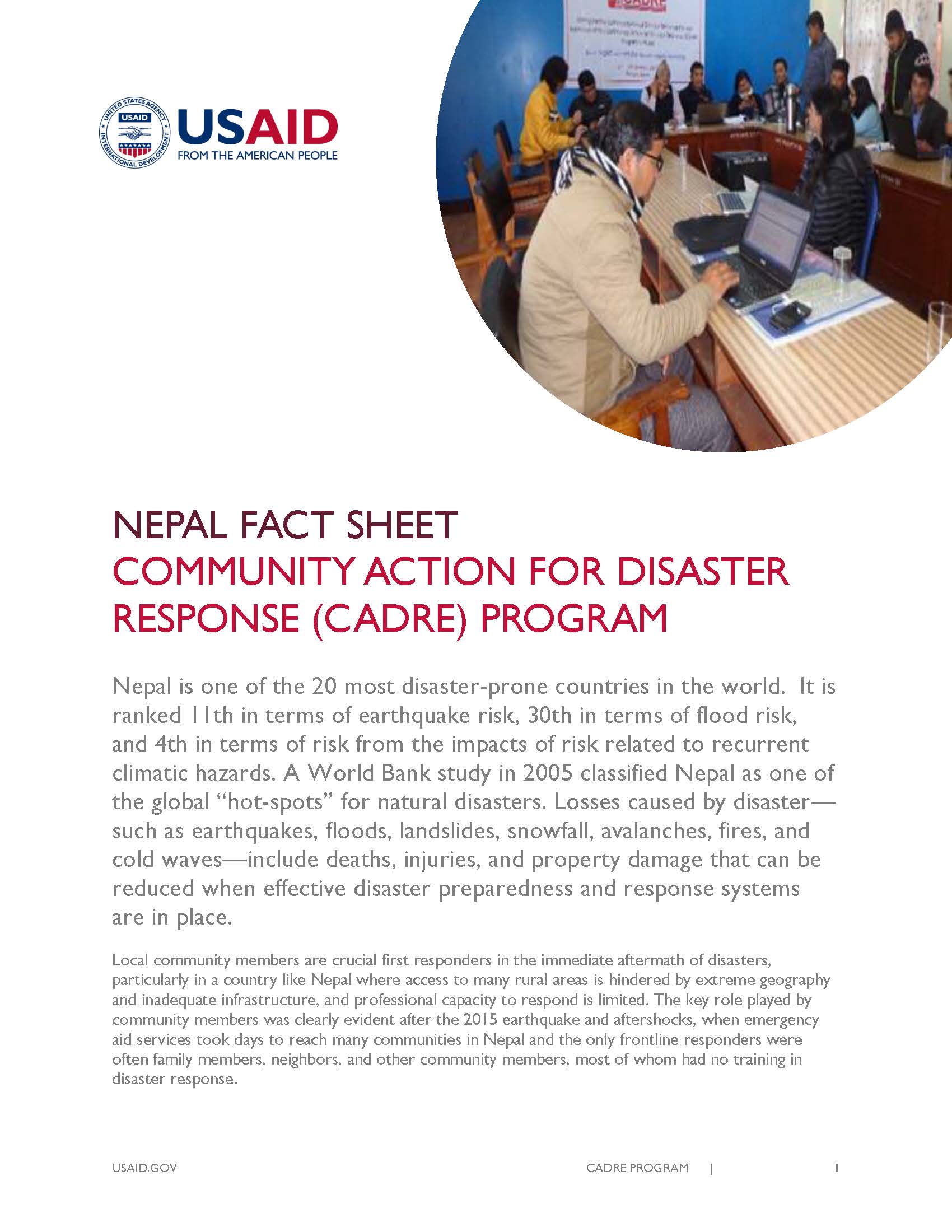Nepal is one of the 20 most disaster-prone countries in the world. It is ranked 11th in terms of earthquake risk, 30th in terms of flood risk, and 4th in terms of risk from the impacts of risk related to recurrent climatic hazards. A World Bank study in 2005 classified Nepal as one of the global “hot-spots” for natural disasters. Losses caused by disaster—such as earthquakes, floods, landslides, snowfall, avalanches, fires, and cold waves—include deaths, injuries, and property damage that can be reduced when effective disaster preparedness and response systems are in place.
Local community members are crucial first responders in the immediate aftermath of disasters, particularly in a country like Nepal where access to many rural areas is hindered by extreme geography and inadequate infrastructure, and professional capacity to respond is limited. The key role played by community members was clearly evident after the 2015 earthquake and aftershocks, when emergency aid services took days to reach many communities in Nepal and the only frontline responders were often family members, neighbors, and other community members, most of whom had no training in disaster response.
As part of the USAID/OFDA’s regional Program for Enhancement of Emergency Response (PEER), the American Red Cross (ARC), Nepal Red Cross Society (NRCS), and National Society for Earthquake Technology (NSET) are collaboratively conducting Community Action for Disaster Response (CADRE) courses in Nepal. The program aims to enhance community-level first responder capacity in Nepal. USAID/OFDA has supported CADRE courses in Nepal since 2012.








Comment
Make a general inquiry or suggest an improvement.